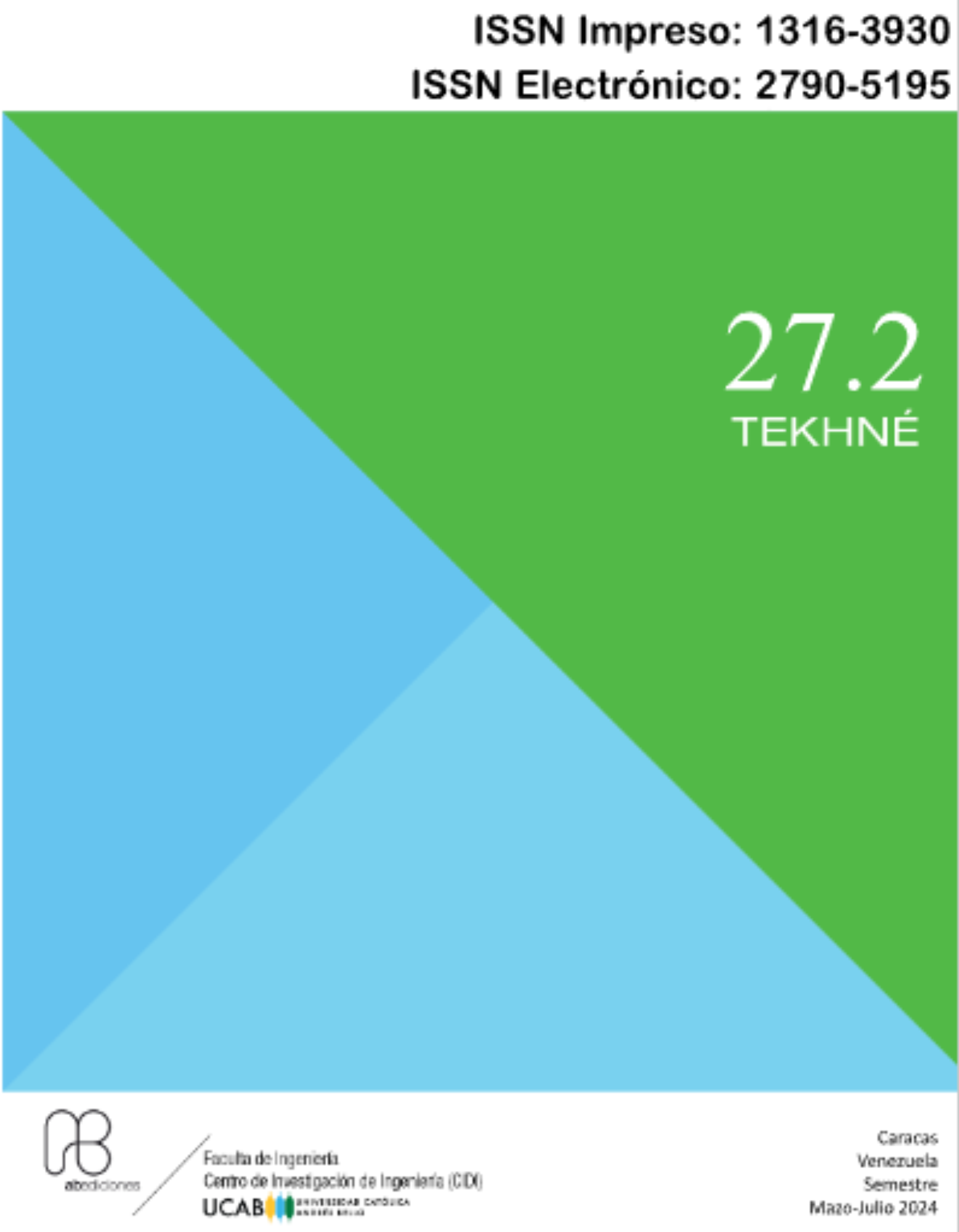Optimization of agricultural waste reuse processes: a contribution to the production of bioproducts
DOI:
https://doi.org/10.62876/tekhn.v27i2.6568Keywords:
bioproducts, reuse, contamination, furfuralAbstract
The use of wastes obtained from industrial processes is essential to reduce environmental pollution. In countries where agricultural production is a very important activity, the amount of waste derived from these processes is very large, so reducing this amount is an important benefit. The objective of this work is to present an optimization process for the reuse of agricultural process wastes, such as rice husks and corn stover, to obtain furfural, a chemical compound of great industrial importance due to its multiple applications, and also because it is a bioactive agent. This process contemplated several variables in order to obtain the best results, giving as a result that the conditions that the industry should apply to obtain a higher yield are that the milling should be very fine to obtain very small particles; the concentration of acidity should be around 15 %; the resting time period should be around 12 hours for small particles and 24 h for intermediate particles, which will depend on the material used for the synthesis, as well as the agitation speed, and using a temperature between 200-250 °C, thus facilitating the hydrolysis of the pentoses, where the furfural production process will be enriched with high percentages of production in the long term
Keywords: bioproducts; reuse, contamination; furfural
Downloads
References
SilvaSanchesJorqueira,D;FranzodeLima,L; Moya,S.F.; Vilcocq, L; Richard,D; Fraga,M. A; SoeiroSuppino, R.(2023).Critical review of furfural and furfuryl alcohol production: Past, present, and future on heterogeneous catalysis. Applied Catalysis A: General. Volume 665(5).DOI:https://doi.org/10.1016/j.apcata.2023.119360Get rights and content
Wondu Business and TechnologyServices. (2006). Furfural chemicals and biofuelsfrom Agriculture.Sidney, Australia: Rural Industries Research and Development Corporation.06/127, Sydney, 39.Disponible en : https://www.academia.edu/37028320/Furfural_Chemicals_and_Biofuels_from_Agriculture_A_report_for_the_Rural_Industries_Research_and_Development_Corporation. Consultado el 9 de junio 2012].
Prada, A., y Cortés, C. E. (2010). La descomposición térmica de la cascarilla de arroz: Una alternativa de aprovechamiento integral.Orinoquia,14(2 sup), 155–170.Disponible: https://orinoquia.unillanos.edu.co/index.php/orinoquia/article/view/103(Consultado el 30 de junio de 2024).
Santos Hernández,N; MirandaCaballero,A; Ipsán Pedrera,N; Ribet Molleda, Y.(2015)El vertimiento de cascarilla de arroz y el medio ambiente. Avances, 17(2), 165-174.Disponibleen : https://www.redalyc.org/pdf/6378/637867040004.pdf(Consultado el 10 de junio de 2023).
Comisión para la Cooperación Ambiental(CCA). (2014). La quema de residuos agrícolas: fuente de dioxinas, Comisión para la Cooperación Ambiental, Montreal, Canadá, 6 pp.Disponible en : http://www.cec.org/files/documents/publications/11405-la-quema-de-residuos-agr-colas-es-una-fuente-de-dioxinas-es.pdf(Consultado el 11 de abril de 2024)
Enyisi, S.I; Umoh,V; Whong,C; Abdullahi,I; Alabi, O.(2014).Chemical and nutritional value of maize and maize products obtained from selected markets in Kaduna State, Nigeria. African J Food Sci Technol. 5(4):2141–5455.Disponible en : https://www.interesjournals.org/articles/chemical-and-nutritional-value-of-maize-and-maize-productsobtained-from-selected-markets-in-kadunastate-nigeria.pdf(Consultado el 17 de abril de 2024).
Hoyos Gómez, G. (Editora) (2018).Algunos componentes generales, particulares y singulares del maíz en Colombia y México. Universidad de Antioquia. Facultad de Ciencias Agrarias. Medellín. Colombia. 209 pp. Disponible: https://revistas.udea.edu.co/index.php/biogenesis/article/view/336208/20791740(Consultado el 30 de junio de 2024).
Urango, L.A. (2018)Componentes del maíz en la nutrición humana. Escuela de Nutrición y Dietética. Universidad de Antioquia, Colombia.Disponible en : https://revistas.udea.edu.co/index.php/biogenesis/article/view/336229/20791758(Consultado el 30 de junio de 2024).
Martillo Aseffe, J; LesmeJaén, R; Oliva Ruiz,L; Martínez González,A; Silva Lora, E:E. (2019).Análisis de ciclo de vida del aprovechamiento energético de los residuos (tusa) de la cosecha de maíz (Zea mays) en la provincia de Los Ríos, Ecuador. Tecnología Química, 39(3).p. 655-672.Disponible en <http://scielo.sld.cu/scielo.php?script=sci_arttext&pid=S222461852019000300655&lng=es&nrm=iso>. accedido en30jun.2024.
Red IBEROMASA. (2020).Optimización de los procesos de extracción de biomasa sólidapara uso energético. Trabajos de investigación 2020.Programa Iberoamericano de Ciencia yTecnología para el Desarrollo (CYTED), 286 p. Disponible en :https://iberomasacyted.blogs.upv.es/files/2022/03/Cuadernos_Red_Iberomasa_Trab_inv_2019_k5.pdf(Consultado el 12 de mayo de 2024).
Riera,M; Mero,M; Párraga, M.A.(2024).Residuos revalorizables: una oportunidad de desarrollo manabita. Revista ESPAMCIENCIA ISSN 1390-8103, 15(1), 12-20.DOI:https://doi.org/10.51260/revista_espamciencia.v15i1.466
Vassilev,S.V; Vassileva,C.G; V.S. Vassilev, V:S. (2015).Advantages and disadvantages of composition and properties of biomass in comparison with coal: An overview. FUEL The science and technology of Fuel and Energy, Vol 158: 330-350. Disponible en: https://www.sciencedirect.com/science/article/abs/pii/S0016236115005578(Consultado el 01 de abril de 2024)
García-Domínguez,M.T; García-Domínguez, J:C;Feria, M:J; Gómez-Lozano,D:M; López,F; Díaz, M.(2013).Furfural production fromEucalyptus globulus: Optimizing by using neural fuzzy models. Chemical Engineering Journal.Volume 221(1) 185-192.https://doi.org/10.1016/j.cej.2013.01.099
Amaya, J; y W. Quiroga, W; Rincòn, P; Lòpez, F. (2022)El furfuralcomo molécula plataforma: sus aplicaciones en la actualidad y futuro prometedor. Conference: LatinXChem. DOI:10.13140/RG.2.2.31976.96005
Torroba, A.(2024).Biocombustibles líquidos: fundamentos y evolución reciente. En : Estado y perspectivas de los biocombustibles en América. Informe de situación y perspectivas de bioeconomía en América Latina y el Caribe, IICA, 100-106. Disponible en : file:///C:/Users/isele/Downloads/BVE24034051e.pdf(Consultado el 7 de mayo de 2024)
Aristizábal,M.V; Parra, R.D; Pisarenko,Y.A; Cardona, C.A.(2015).Análisis de la estática para la síntesis de furfuralpor destilación reactiva. Revista de la Facultad de Ciencias Químicas,N° 13, 56-63.Disponible en : https://publicaciones.ucuenca.edu.ec/ojs/index.php/quimica/article/view/1603/1259(Consultado el 30 de junio de 2024)
Liaño Abascal,N; Guerra Rodríguez,L. E; M.Pérez Colas,M; González Suárez, E. (2023).Pellets de bagazo de caña, una oportunidad energética.Centro Azúcar Vol 50, No. 2. Disponible en:http://scielo.sld.cu/scielo.php?script=sci_arttext&pid=S2223-48612023000200022(Consultado el 30 de junio de 2024)
Downloads
Published
How to Cite
Issue
Section
License
Copyright (c) 2024 Tekhné

This work is licensed under a Creative Commons Attribution-NonCommercial-ShareAlike 4.0 International License.




